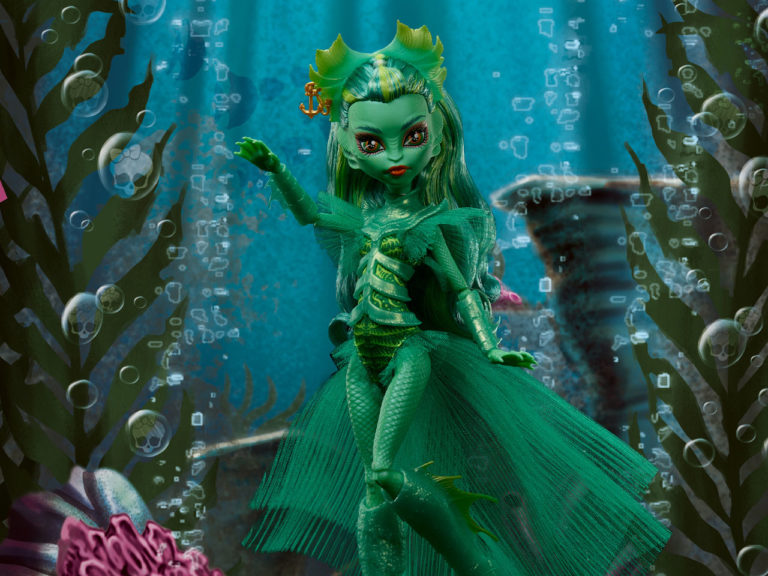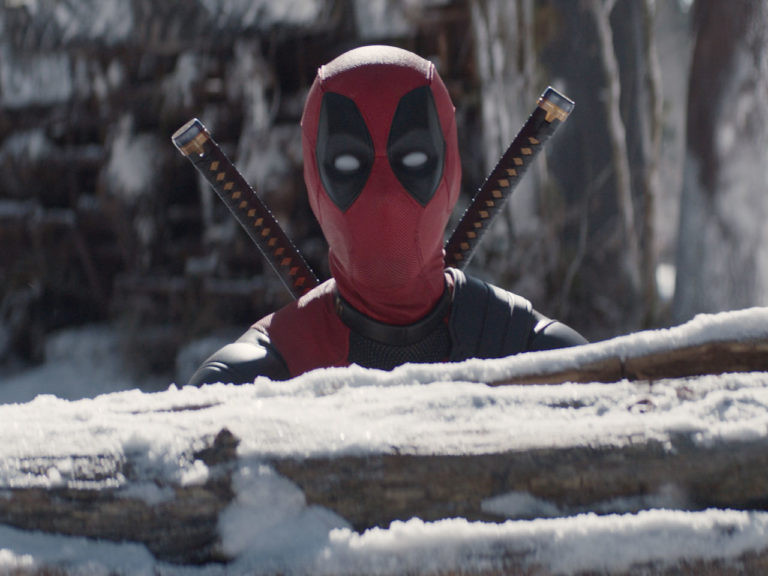

Brainiac has been taken out by Amanda Waller, but what sounds like a victory cry may actually be the death-knell for Earth’s heroes and all they hold dear. They’re in a race against time to bring balance to the planet Colu and save it from the consuming GalactitesOmega Titans, but what will await them at home if they succeed and return? Things are only getting messier in Justice League: No Justice #2.
Cohesion
My biggest criticism of Dark Nights: Metal is that it had an identity crisis. Was it supposed to be a rock-and-roll romp through the DC mythos? Or was it supposed to be a nightmare epic that changed the status quo? It at times felt like one of those things, and at others felt like it was trying to be both of those things; but, it never all came together into what felt like a unified story. It read like it was written in two distinct corners of Scott Snyder’s brain, rather than at a place where those corners of his psyche reach out and converge.
Two issues in, and No Justice has me thinking that Snyder learned a lesson from Metal. I’m not suggesting that he doesn’t stand by it, or even that he’s aware of the lesson; but No Justice is—at a high level—an attempted fusion of the same sorts of elements that Metal was playing with, and Snyder has clearly found the point of intersection in his psyche, and he and his collaborators are writing very close to it. Transitions between gravity and absurdity don’t feel forced or jarring; rather, they feel like the natural course of things—idiosyncratic behaviors arising from character, rather than enslavement to particular preconceived notions of plot.
I think it helps that—as I said last week—the overarching plot is not over-dense: sensing an impending end to the universe, four ancient beings survey the cosmos and render merciless judgment on imbalanced worlds. That’s it in a nutshell. The simplicity of it gives the series—and this particular issue—room to breathe, and lets characters respond to the threat in a manner that fits them, rather than in service to some arbitrary outcome in the plot.
The devilAmanda Waller’s in the details
So let’s talk specifics. We open on Amanda Waller decked out in snow gear driving a big ole snow tank across the Arctic Circle. She’s on speaker with Sam Lane, and she’s basically handling him like she would a gnat. The whole thing is very Waller, from the independence, to the impatience, to her ability to make very feminine fashion seem like drapes surrounding a toilet.

I like what this series is doing with Waller so far. Something with this many characters typically benefits from one or a few focal points, rather than an attempt at serving every character equally. Geoff Johns was great at this in his run on Justice League, be it Luthor in Forever Evil, or Diana in the Fabok days. Marvel Studios’s Infinity War film likewise handles this with excellence, honing in on Thanos, Gamora, and just a few others. Having a manageable number of perspectives makes it easier for the audience to invest in what’s going on, because they aren’t caught trying to process a dozen in parallel.
To a degree, this feels like Waller’s story so far. Her presence is woven throughout, and her motivation and intention are revealed with greater clarity than any other character. She is also—along with a partner she acquires this issue—the “team back home.” I likened the evolving Snyder to Jonathan Hickman last week, and this “Earth-sitting” in particular feels reminiscent of Hickman’s Infinity. It’s not anything close to a direct copy, but the idea of a cosmic conflict drawing Earth’s protectors away, with a skeleton crew left at home, is very much like that other story. Come to think of it, even the Omega Titans seem somewhat parallel to Hickman’s Builders—architects of the universe come back to annihilate it now that it has been catastrophically compromised. If I were Scott Snyder’s close, personal friend, and I was over his house for drinks and h’ors d’oeuvres, and I saw a copy of Infinity sitting on the counter in his favorite bathroom, I would not be at all surprised.
[Brian Warshaw is not actually Scott Snyder’s friend. Any similarities between this fictional representation of Scott’s house, preferred type of get-together, and bathroom reading habits is purely coincidental, and can not be used against Brian Warshaw in a court of law or Internet shaming campaigns.]
How does all of this work?
So, the weakest part of this story is the explanations. I know we’re dealing with big concepts, and we need to understand how they work to some degree, but the results are mixed. Snyder, Tynion, and Williamson make a good effort at trying to plop the explanations into somewhat natural dialogue, but the success seems to depend on the characters in play. The best by far is Lobo, who, for whatever reason, decides to pep-up Beast Boy:

And this is a good path back into the book’s greatest strength, which I already mentioned above. This is perfect Lobo, and it’s hilarious, but it drives the story onward, too. It functions just fine as comic relief (though there’s enough funny in this book that “relief” might be a misnomer), but what he says also makes sense to Beast Boy. And it makes sense to us, the readers. And it makes sense to us that it makes sense to Beast Boy. The humor doesn’t fork the road, but instead greases the wheels of the narrative and moves us along gracefully.
I also mentioned above that the characters aren’t tools here. They get to be themselves, more or less, and a lot of the humor arises from who they are. Take these panels here:

Sinestro generates the laugh, but he does it without breaking character. His pure self coming up against the circumstances of the plot yield something good and entertaining, simply because the writers are letting him be himself.
But how’s it look?
It looks amazing—again. There are eight double-pagers this time, and as I said last week, I think that’s great for this book. Big, bold, in-your-face perspectives that are larger than our field of vision—that’s exactly what this story needs to match its scope. But it also helps the layouts to breathe, because some of the panels feature a lot of characters and activity, and tighter paneling would likely have been too-crammed and visually confusing.
Manapul gets an assist from Marcus To, whose aesthetic I would not normally think of as a compliment to Manapul, but it works here: in part because of Hi-Fi’s unifying colors; in part because the layouts are all Manapul’s; but also, I think, because the sheer busyness and exotic nature of most of the panels makes the rendering differences harder to spot than if we were just looking at panel after panel of the plain human form.
Deron Bennett (credited as his company name, AndWorld Design) once again has the difficult task of working a LOT of text into some pretty tight spots, but the final product is very well done. I really like the choices of type in this series as a whole, from the setting captions, to the standard dialogue font, to the credits page. I spot very few sound effects in this issue, which is somewhat disappointing, but that’s hardly the fault of the Bennett. I just think that in a book with so much comic book bombast, it would be nice to see the undeniably comic-booky effects. Oh well—I can’t say I noticed it until I was looking for it.
Recommended if…
- You like stories that are multifaceted without having multiple personalities.
- You love big, widescreen superhero action and crazy cosmic locales.
- Freaking Starro, man. Seriously.

Overall
No Justice #2 carries forward what was good in the first installment, while benefiting greatly from having much of the exposition behind it. The artwork is big, bold, and exotic, and the characters are starting to settle in and feel more like themselves. With plenty of humor, action, and cosmic intrigue, No Justice is a signal to fans that DC is once again taking their flagship team-up book seriously.
SCORE: 9/10


